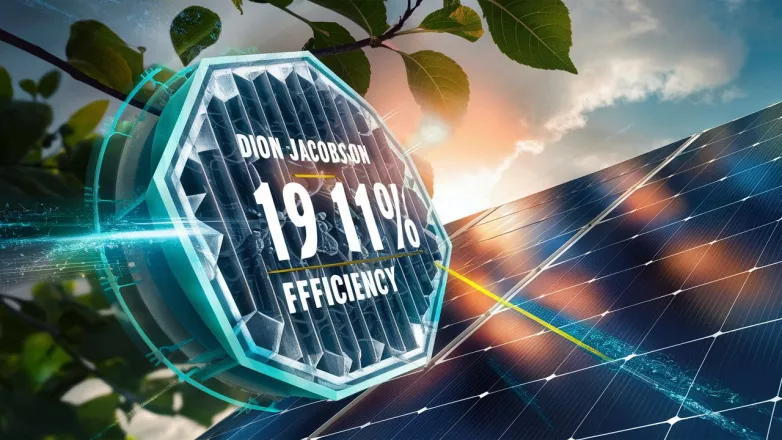2D Dion-Jacobson Perovskite Solar Cell Achieves 19.11% Efficiency
- Breakthrough in solar cell technology: Chinese researchers achieve 19.11% efficiency using ultrastable 2D DJ perovskite material, paving the way for scalable commercialization.

Researchers from China's National Center for Nanoscience and Technology, Chinese Academy of Sciences (CAS), and Beihang University have developed a solar cell using ultrastable 2D Dion-Jacobson (DJ) perovskite material, achieving an efficiency of 19.11%. This material showed high stability and competitive performance in optoelectronic applications, despite previous poor performance of DJ perovskite-based solar cells compared to their 3D counterparts.
The solar cell was fabricated using blade coating technology and consisted of layers including a CDMA-based DJ perovskite layer, a hole transport layer, an electron transport layer, and a top electrode made of silver. The device demonstrated remarkable humidity, thermal, and operational stability, with negligible efficiency loss after exposure to harsh conditions for thousands of hours.
The research team highlighted the potential of the designed DJ perovskite solar cells for scalable technology and commercialization, emphasizing the significance of the interlayer-displacement DJ series in constructing structurally stable 2D perovskites. The efficiency and stability of the solar cell suggest promising advancements in the field of photovoltaics.
What breakthrough has China's research team made in solar cell technology?
- Researchers from China's National Center for Nanoscience and Technology, CAS, and Beihang University have developed a solar cell using ultrastable 2D Dion-Jacobson (DJ) perovskite material, achieving an efficiency of 19.11%.
- The DJ perovskite material showed high stability and competitive performance in optoelectronic applications, overcoming previous poor performance of DJ perovskite-based solar cells compared to their 3D counterparts.
- The solar cell was fabricated using blade coating technology and consisted of layers including a CDMA-based DJ perovskite layer, a hole transport layer, an electron transport layer, and a top electrode made of silver.
- The device demonstrated remarkable humidity, thermal, and operational stability, with negligible efficiency loss after exposure to harsh conditions for thousands of hours.
- The research team highlighted the potential of the designed DJ perovskite solar cells for scalable technology and commercialization, emphasizing the significance of the interlayer-displacement DJ series in constructing structurally stable 2D perovskites.
- The efficiency and stability of the solar cell suggest promising advancements in the field of photovoltaics.
Also read


